Building, maintaining, and protecting trails is, at its core, meant to nurture connection.
But, in this connection there is also diversity. The diversity of experiences to be found on and off the trail. The diversity of ways people find connection to the trail and its resources, through recreation, stewardship, advocacy, and other forms of enjoyment and support. There is also diversity in the array of benefits trails can provide. And, of course, there is diversity of perspectives and identities found among the broader trail community.
The ways in which trails nurture connections can be complex and difficult to capture in its nearly infinite permutations. The best we can do is tell the stories of people who have found connection to the Appalachian Trail and its various values. These people are diverse in their perspectives and in their connections. Hikers, birdwatchers, naturalists, Trail maintainers, boundary monitors, storytellers, Appalachian Trail Conservancy staff and volunteers, A.T.-maintaining club members, advocates, Trailside community residents. The list goes on. These stories are what we consider to be part of the millions of Trail narratives that exist across our broad community. We hope you find connection to some of these stories we’ve included in this issue, and ultimately build your own connection to the Trail
Mountain, Connecticut
Photo by Michael Adamovic
Mountain, Connecticut
Photo by Michael Adamovic
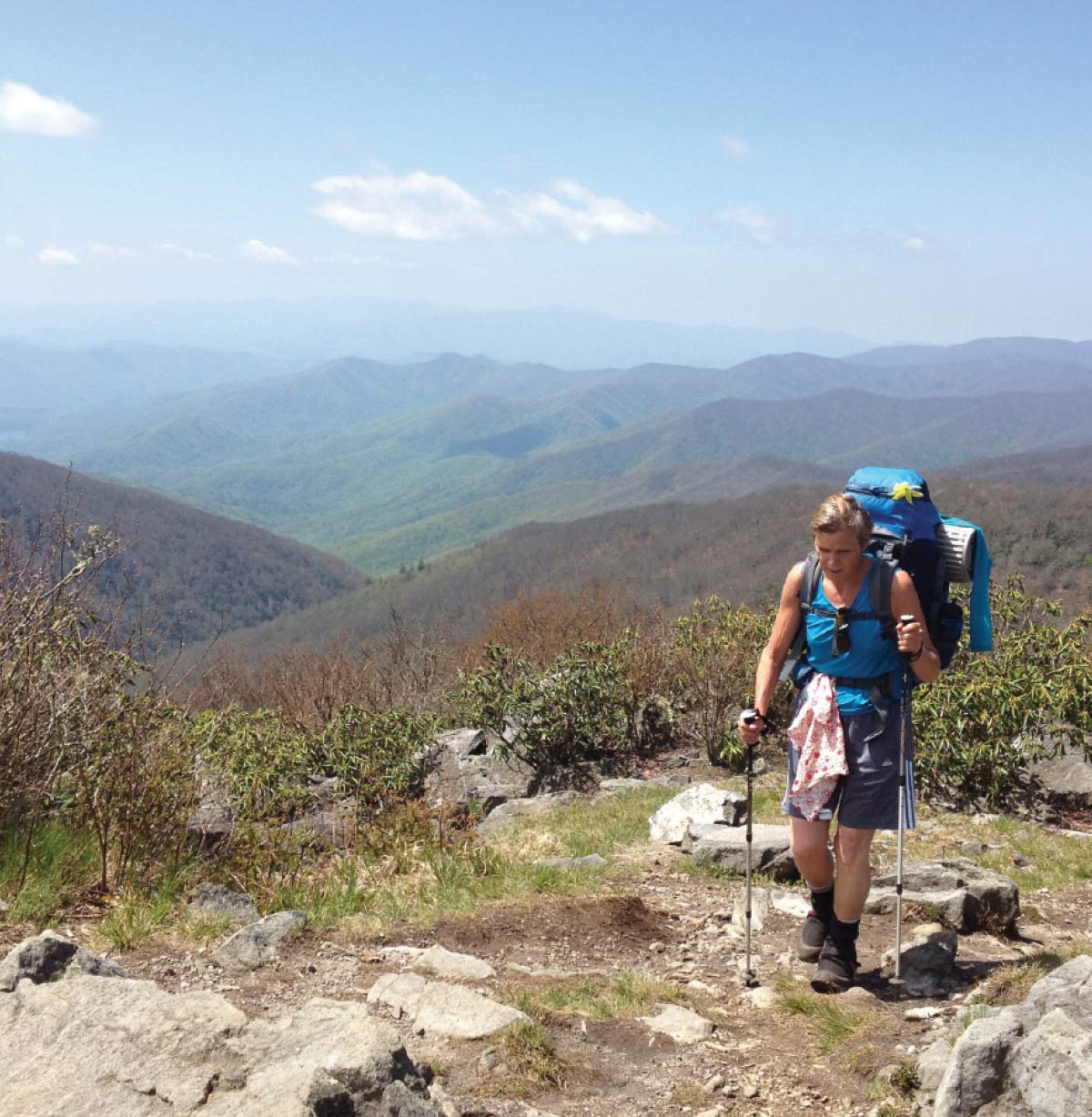
Fast forward to April 1, 2012, as mother and son arrived in Amicalola Falls State Park to begin a northbound thru-hike. By the time we made it out of Georgia, the adventure that I had imagined evaporated and was replaced by the reality of the daily grind of life as a long-distance hiker. I settled into the rhythm simply because there was no alternative. Up at 5:00 a.m., on the Trail by 6:30, logging more miles every day. The footpath I had once imagined was a mirage replaced by rocks, roots, boulder scrambles, steep climbs, and steeper descents (or so my knees told me). I saw virtually nothing but my feet and the trail beneath them. Somewhere along the way in this hiking blur I crossed paths with a deer tick who generously shared the bacterium Borrellia burgdorferi with me. The dreaded Lyme disease had found its next victim, and I finally succumbed to it just shy of Lee, Massachusetts — 1,550 miles done and so was I.
Since exiting the A.T. in 2012, I have regrouped several times and logged 500 more miles. Initially, the thought of not completing my mission of hiking the entire Appalachian Trail was devastating. I was angry, despondent, and full of “it’s not fair” self-loathing. Over time — the great antidote for foolish thinking — I began to realize the gift that had been given to me. Slow the pace (on the Trail and in life), observe the surroundings (on the A.T. and in life), appreciate the small things, which are often the big things — on the Trail and in life.
I still envision summiting Katahdin and experiencing the euphoria of touching that sign that represents a once-in-a-lifetime adventure. But, I also know that leaving the Trail in 2012 gave me a new lens to view the greater journey that, for me, has culminated in my work as a volunteer (on the Appalachian Trail Conservancy’s board) helping to protect, manage, and advocate for the Appalachian Trail. Perhaps I have reached my Katahdin moment after all.
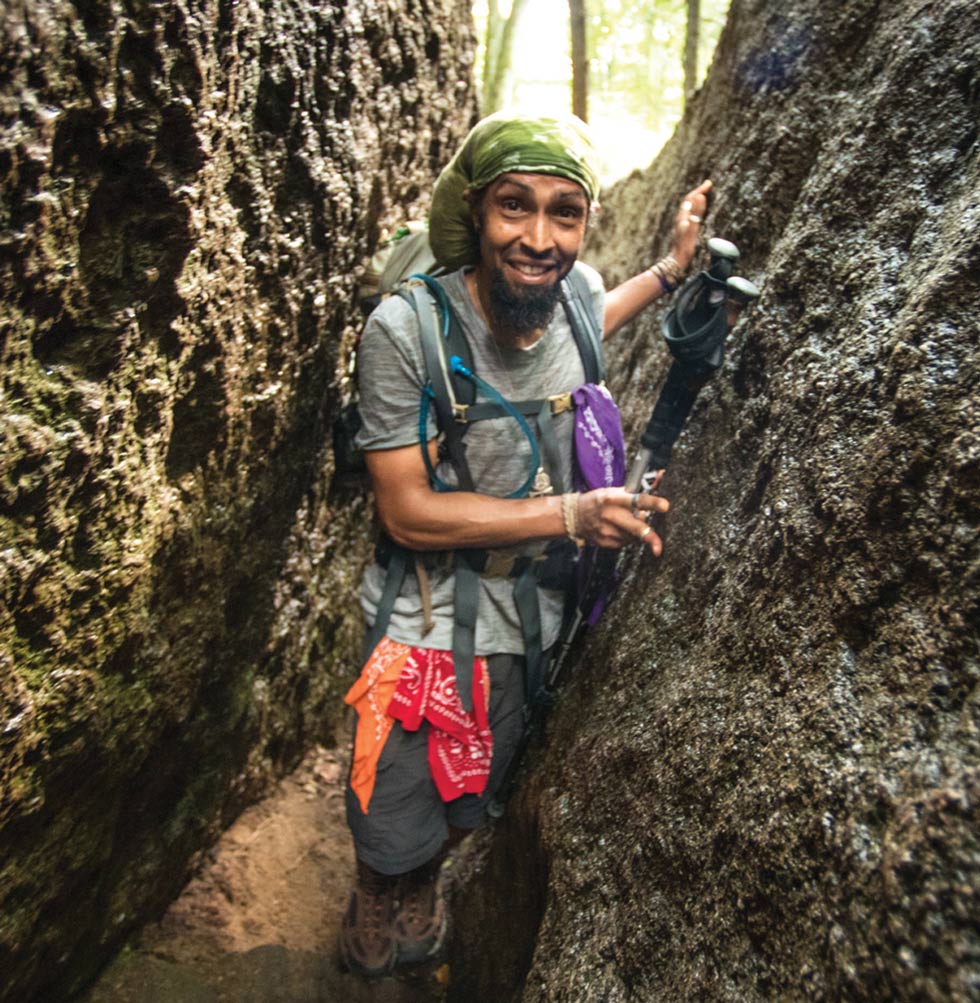
My affection for the A.T. stems from three factors: my thru-hike expectations, the actual reality of the experience of thru-hiking, and the permanent imprint it has left on me. From the moment I started my thru-hike, I was hooked. The hold the Trail had on me magnified when I wrote my A.T. memoir, The Unlikely Thru-Hiker. My A.T. journey became a part of who I am: not necessarily a hiker or an outdoor enthusiast, but a person who understands the need to relate to nature and how nurturing nature is for our mind, body, and soul.
Up to that point, my thru-hike was the undertaking of my life. For that reason, it has stuck with me. No matter how many years pass, like a faded tattoo, the Trail will be a permanent fixture in my life. It has altered my way of living, my career path, and my perception of humanity. I refer to my thru-hike as the turning point of my existence that I didn’t realize I needed or even wanted. I went from a city-dweller with zero hiking, camping, and mountain-climbing experience to an ambassador and storyteller of the outdoors. To say my time on the A.T. was life-changing is not an overstatement. Until my last days on this planet and beyond, I will have a special connection with the Appalachian Trail.
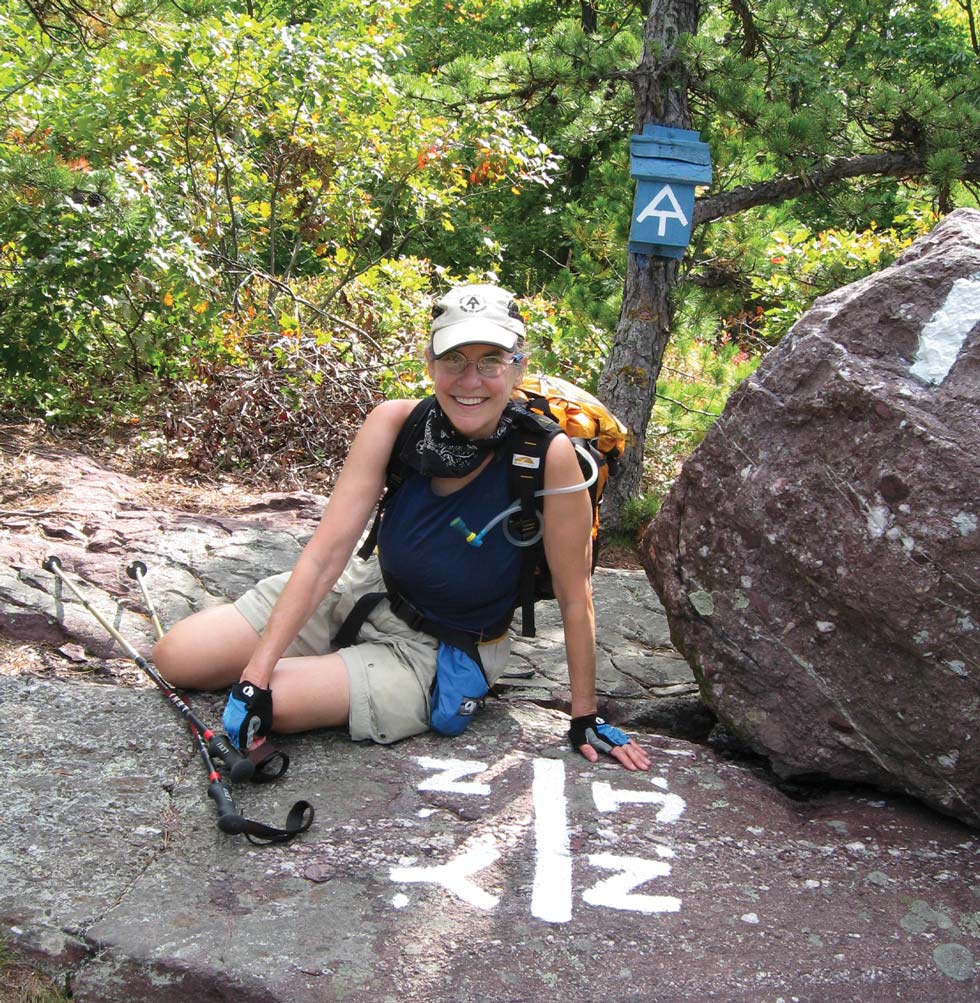
I began to section-hike the entire Trail – first for a week at a time, then four weeks, and finally six weeks. My first trip to Maine left me battered and demoralized. But, I was ready the second time, and now it is my favorite state, even though I live in Virginia. I finished in October 2008 on another color-splashed day. At the end of that hike, I felt enormous peace and relaxation instead of urgency and fear of failure. Those feelings now recur within minutes every time I return to the Trail.
Today I am a citizen of the 2,200-mile linear village that is the A.T., doing whatever is needed to protect and enjoy the Trail and its surroundings while helping others do the same. Officially, I am the past president and archivist for the Roanoke Appalachian Trail Club (RATC) as well as a member of the Appalachian Trail Conservancy’s (ATC) President’s Leadership Circle. That can mean retrieving the RATC’s post-1932 archives from someone’s basement or attic, helping the ATC and National Park Service (NPS) create a visual inventory of A.T. views in Virginia and Maine, writing comments to the Federal Energy Regulatory Commission about a dangerous pipeline crossing the A.T., attending Zoom meetings with the NPS, meeting hikers and hauling out trash as a volunteer ATC ridgerunner, or just pausing to eat juicy wineberries along the way. Whatever it takes.
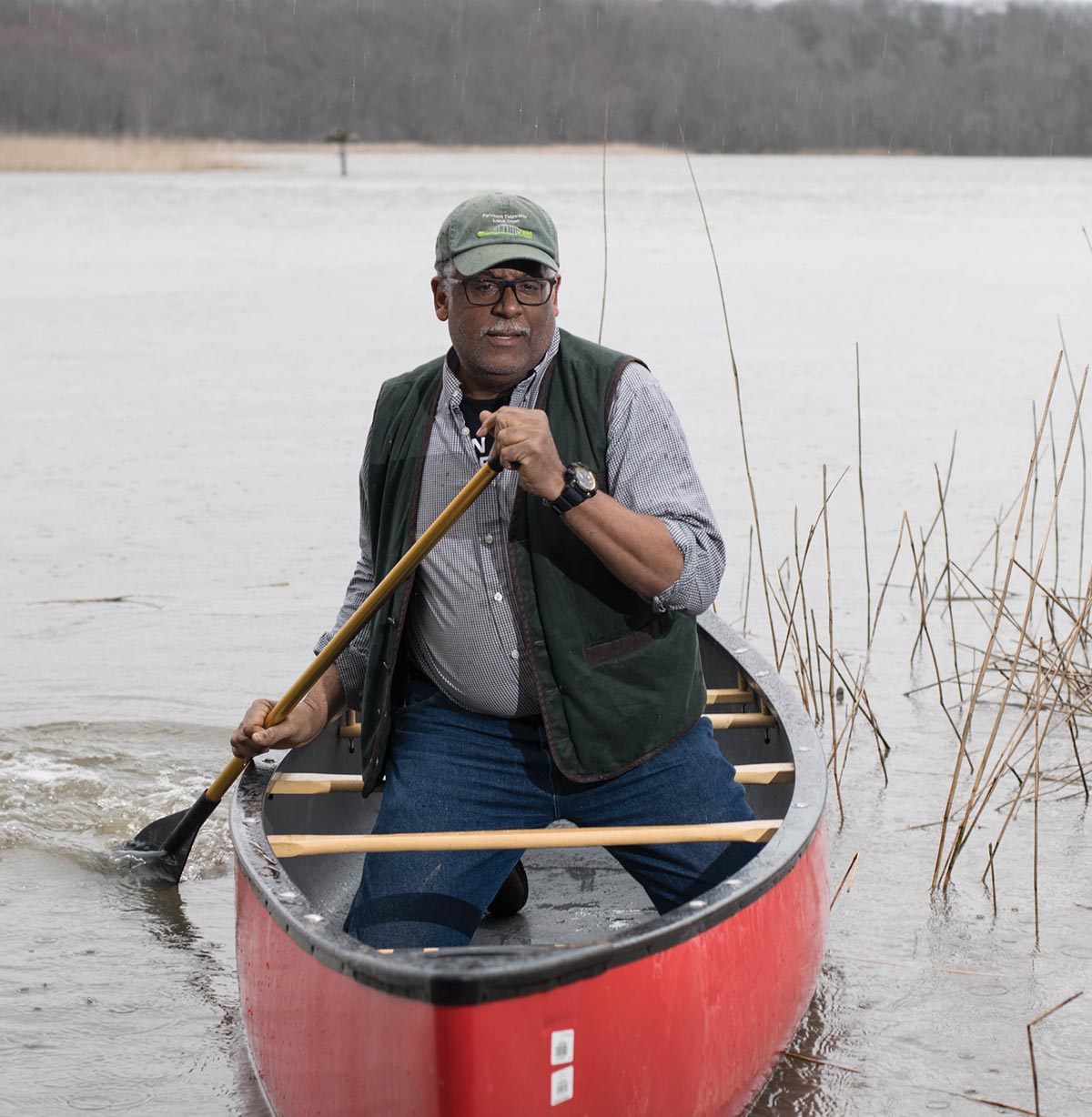
My relationship to the Appalachian Trail (A.T.) these days is that of a walking tourist and aficionado of open-space walkabouts. I’m a journeyman and rambling man who likes the intimacy of seeing the world at ground level — one step at a time. I see the Trail as a resource whose protection is vitally important. The A.T. is, in my view, a public-trust resource that needs to be preserved intentionally or else will disappear and people will lose their sense of connectivity to nature in the process. We could readily lose the sense that this country is something that can be experienced with your feet as well as with your heart, mind, and spirit.
I am fascinated by the A.T. and, like the river I protect in my day job as a riverkeeper, every bend in the river or every bend in the Trail offers something precious and unique that is intriguing and never quite the same twice. The Trail gives up its treasures in ways that affect each of us very personally and very individually. I have found that I not only admire and appreciate seeing the world one step at a time, but I also enjoy the people on the Trail whose perspective is generally fixated on the next ridgeline and seeing what’s over the next hill, switchback, or mountain range. It’s an amazing and very personal thing — and it’s “free,” or at least it’s not something that has been turned into a commercial commodity. That is no small thing.
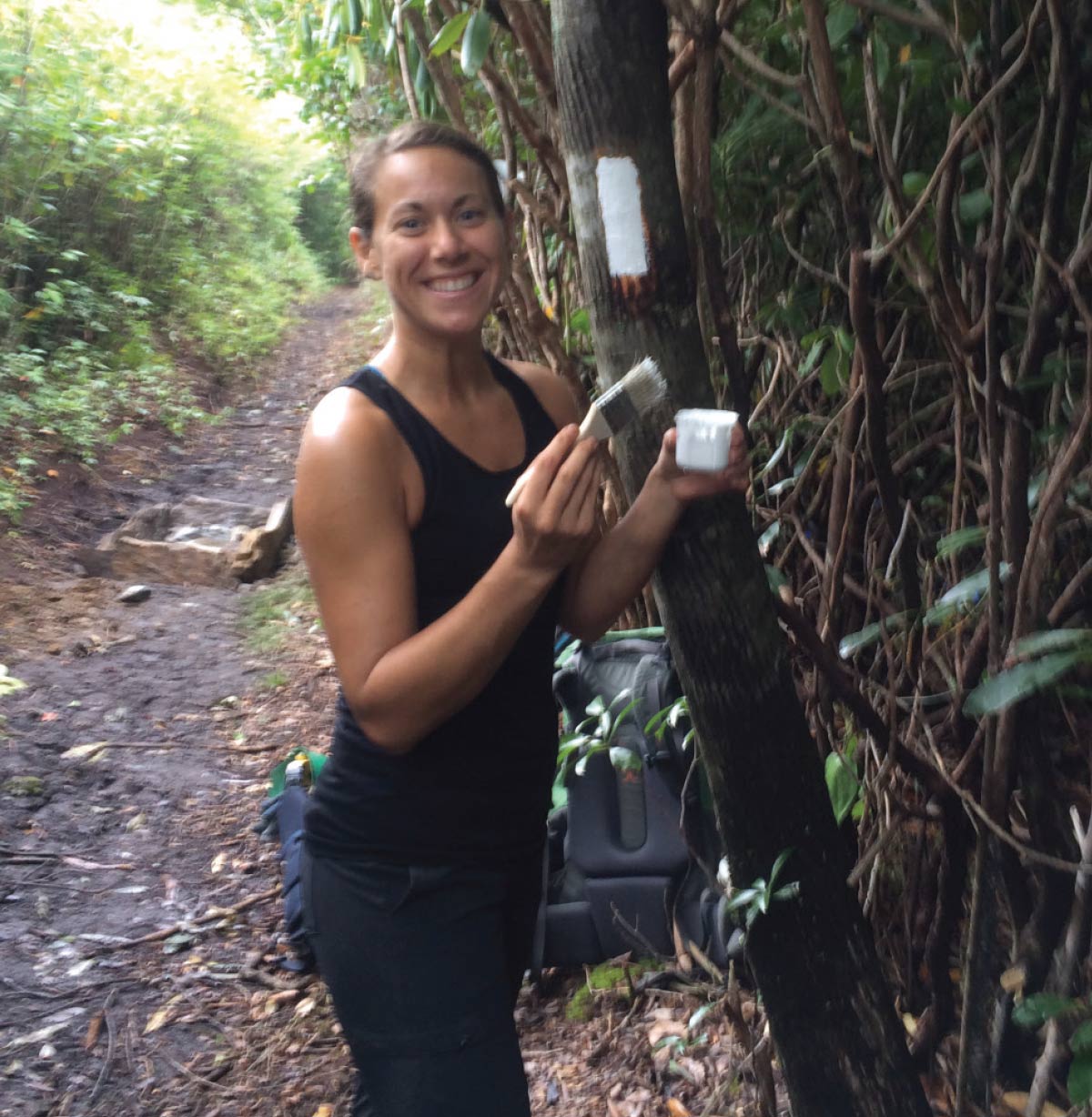
My very first steps onto a trail and into the outdoor world were those I took on the A.T., first climbing to the summit of Bear Mountain in New York, and then running along the ridgelines in the Great Smoky Mountains National Park. The A.T. is quite literally where I found my place in the outdoors — and found a more fully complete version of myself. For this, I will always be an unwavering champion of this precious Trail.
For me, the A.T. holds the potential of deep discovery in nature, in one’s self, and within an amazing community of hikers and Trail enthusiasts. It represents an infinite range of sights, experiences, and emotions that create a space for everyone to take their own first steps in their own unique ways.
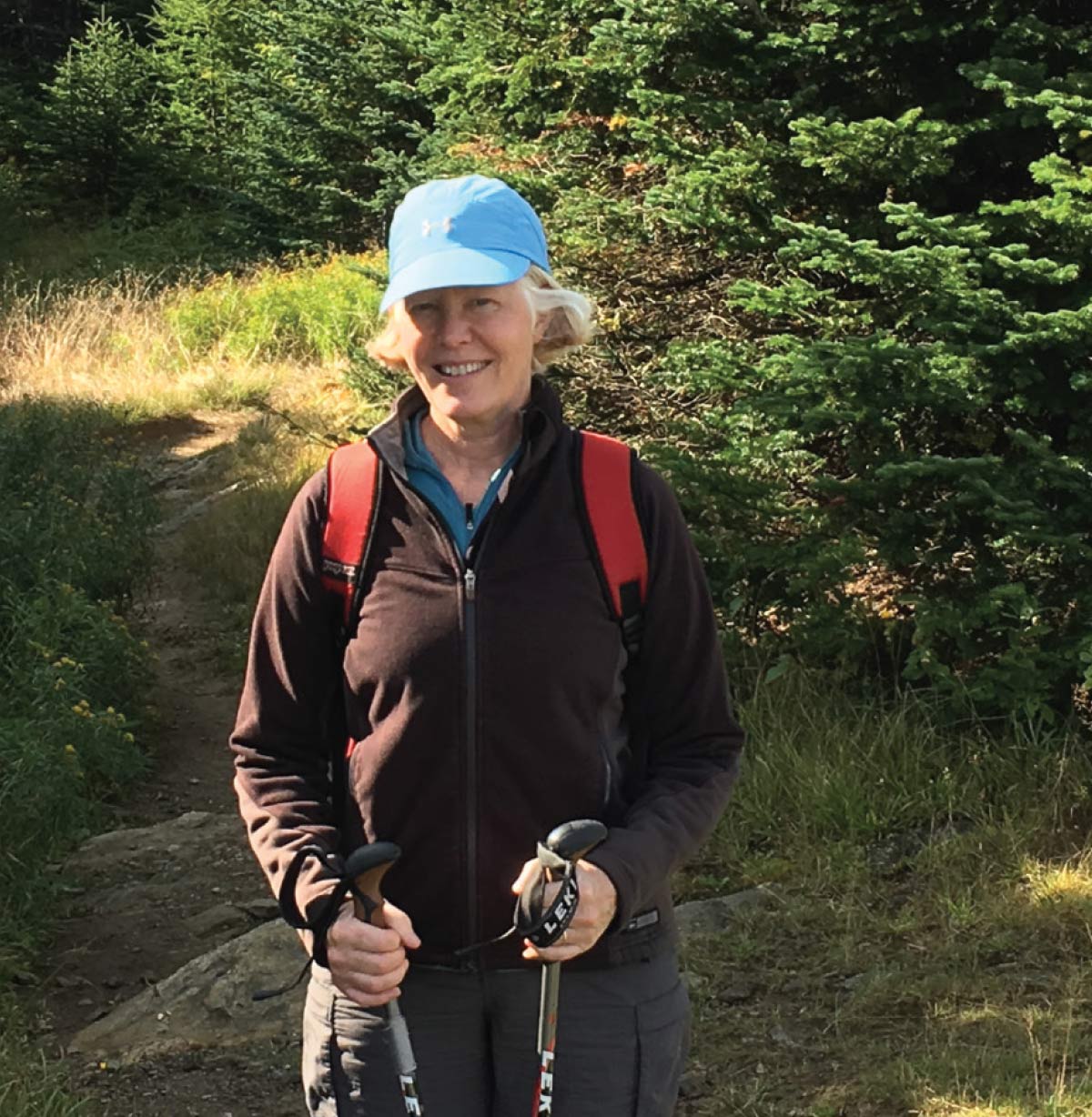
My relationship to the A.T. – apart from the ATC – is defined by the physical challenge it presents. I have hiked a portion of the Trail every year since 2008. When I started hiking the A.T., my only goal was to prove to myself that I still had retained some of my athletic ability from my younger days. That desire still exists and is the primary reason I continue to work on completion of the Trail.
I would define my past relationship with the A.T. as one of fascination. This started in 1975 when I read James Hare’s two-volume Hiking the Appalachian Trail. I couldn’t believe that there was a path in the woods that would take me from Georgia to Maine. Today, I would say that the A.T. is a place where I feel safe and empowered to hike by myself; where I constantly discover the good in people; and where I can slow down enough to appreciate the beauty of the Trail and its surroundings. In terms of the future, I believe the ATC and its partners will need to further address overuse issues. Protecting the adjacent landscape and enlisting more volunteer maintainers will become increasingly important to protect this amazing resource.
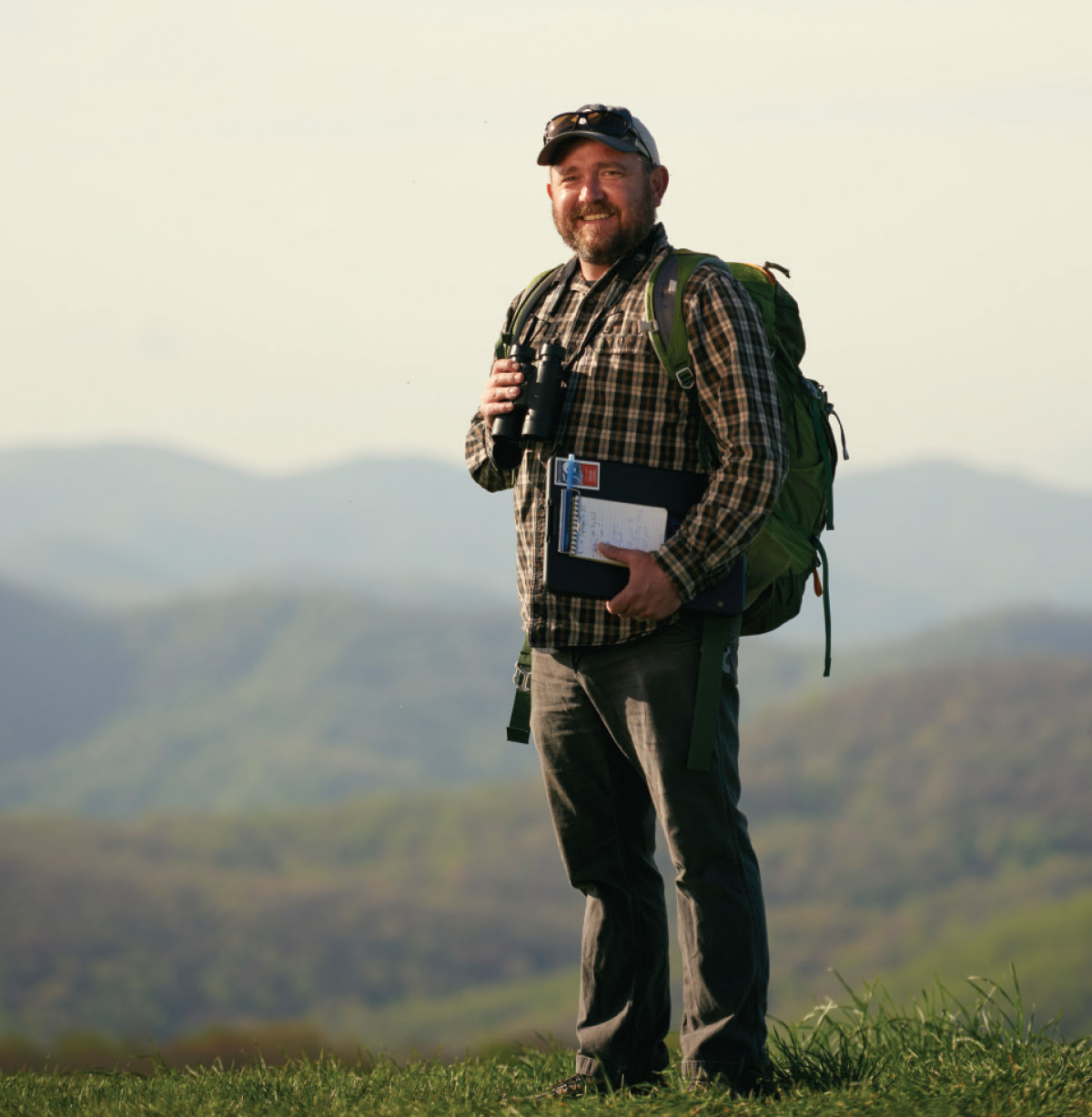
I often pose this rhetorical question when making natural-resource presentations: “What is the value of a national scenic trail that traverses a compromised and degraded landscape?”
I consider the A.T. the backbone of conservation in the East. The establishment of the A.T. and subsequent relocations has led to the protection of tens of thousands of acres of public land, including such iconic places as the Roan Massif and Max Patch. These protected lands provide cover and forage for pollinators and neotropical migrant songbirds, critical corridors for the movement of wildlife, and opportunities for recreation and reflection for millions of people.
I find solace in the protection of these lands and the connectivity they provide when contemplating development patterns and societal challenges, and I find comfort that it is a place where people can simply go and take a walk in the forest, for quite a long distance if they care to.
Through my natural-resources management work for the Appalachian Trail Conservancy (ATC), I have the honor of returning to my project sites many times in a year and many times over the years. I am fortunate to get to know these areas with such intimacy that I feel a connection to individual trees, rocks, and plant populations and can detect the subtleties of forest succession.
When species, habitats, and ecosystems decline or disappear from the A.T. landscape, I believe the intrinsic values of the Trail are at stake. Habitat loss is the leading cause of species extinctions, and habitat loss can even occur on “protected” land. This can be attributed to issues like the spread of nonnative, invasive species or past management practices, such as poorly planned timber harvests and misguided fire suppression. Work we undertake at the ATC aims to restore those compromised areas and protect the incredible biodiversity present along the Trail.

Growing up, I would visit my grandmother, Tillie Wood, each summer, who with my grandfather, Roy Wood, found the land and log cabin that is now Woods Hole Hostel in Pearisburg, Virginia. Then, at 21, I lived for two months at Woods Hole, without my grandmother. My grandfather had passed away, and she carried their tradition of running a hostel for two months each year forward for 22 years. I fell in love with the experience. I planted a seed in my mind that I wanted to live here one day. In the spring of 2009, when I was 30, I moved here to continue my grandparents’ legacy and cultivate my own deep love for nature.
At first, I did not see the impact the larger A.T. community was having on me. I just enjoyed sitting on the porch and talking with hikers. It took moving here, living here, struggling here, and being persistent about staying here for me to realize the impact. I found the hiker community exceptionally trustworthy. A desire grew in me to help people in a way I never wanted to help them before. And, there are some things I have witnessed about this community that I haven’t witnessed anywhere else. I’ve watched hikers be grateful for shelter, grateful for food, and grateful for running water. Witnessing these simple needs and pleasures being fulfilled is a truly wonderful experience.
Here at the hostel, we recycle, compost, grow an organic garden, buy vegetables from local farmers, buy organic as often as possible, and think – and hopefully act – with conservation and sustainability in mind. My hope is that this inspires others in the Trail community.
Today, Woods Hole has developed into a complex working body. The old days of relaxing on the porch are gone. There are things I love, things I want back, and things I am willing to let go of in order to improve life here. The Appalachian Trail reminds people of the basic things in life that are more important than big houses and fancy cars. It is this experience that I hope can be shared with future generations.
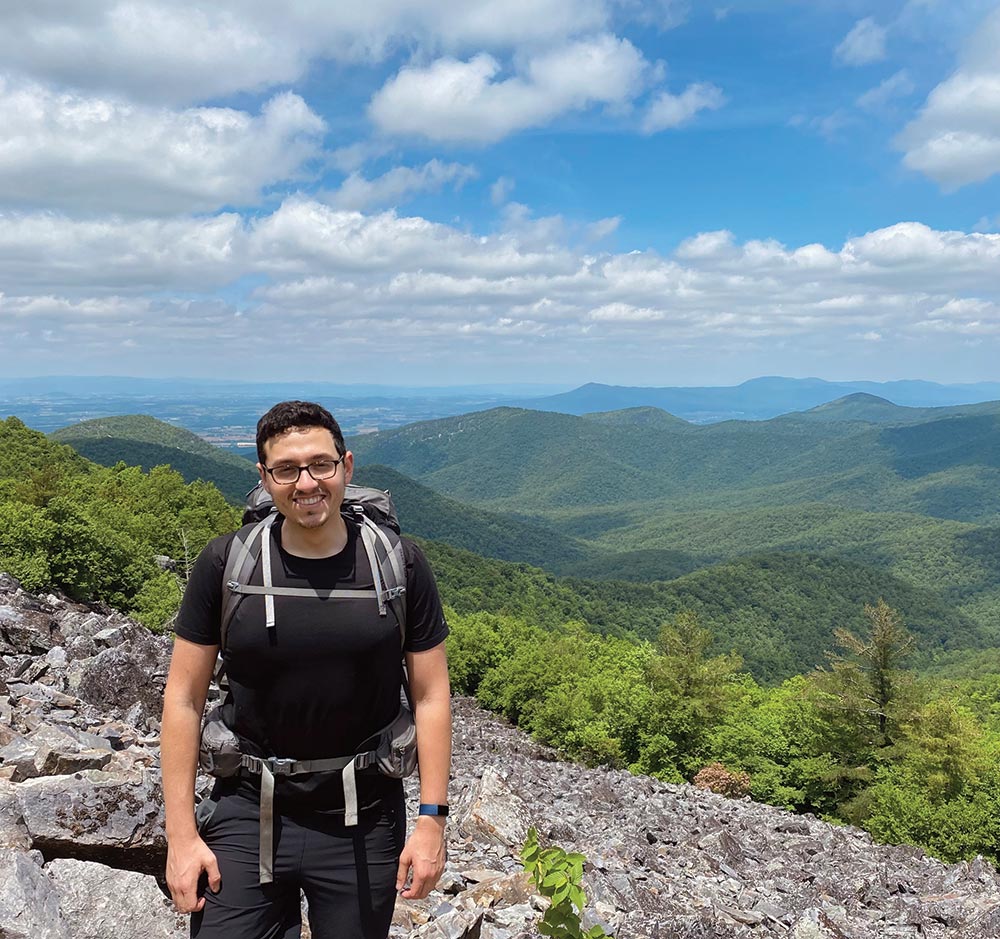
Each time I’ve hiked, I’ve reflected on how much the A.T. inverts everyday life — where the objectives are often unclear and complicated. In my daily life, my mind is constantly filled with decision-making about which paths to take and thoughts about whether the paths I’ve already taken were the right ones. On the Trail, the opposite is true. While life on the A.T. is physically challenging, I know where I’m going and how far I need to go to get there. So, while hiking on the A.T. can be difficult at times, I always come back from my trips feeling renewed and capable of tackling complex problems life presents.
As a hiker, I’ve also been able to reflect on the impact of a changing climate on the A.T. I’ve witnessed heightened temperatures during the summer, the drying-up of certain water sources, and changes in the habitats of countless plant and animal species along the treadway. Through my recent research and work with the Appalachian Trail Conservancy, I’ve also come to appreciate how important the Trail could be to addressing climate change — both by working against it by storing vast amounts of greenhouse gases in its forests, and by adapting to it by allowing animal and plant species to migrate along the Trail corridor as the climate warms and habitats become untenable. Over its next hundred years, I’m confident, the Trail will continue to serve as a place of restoration and refuge for all that use it — people, plants, and animals alike.
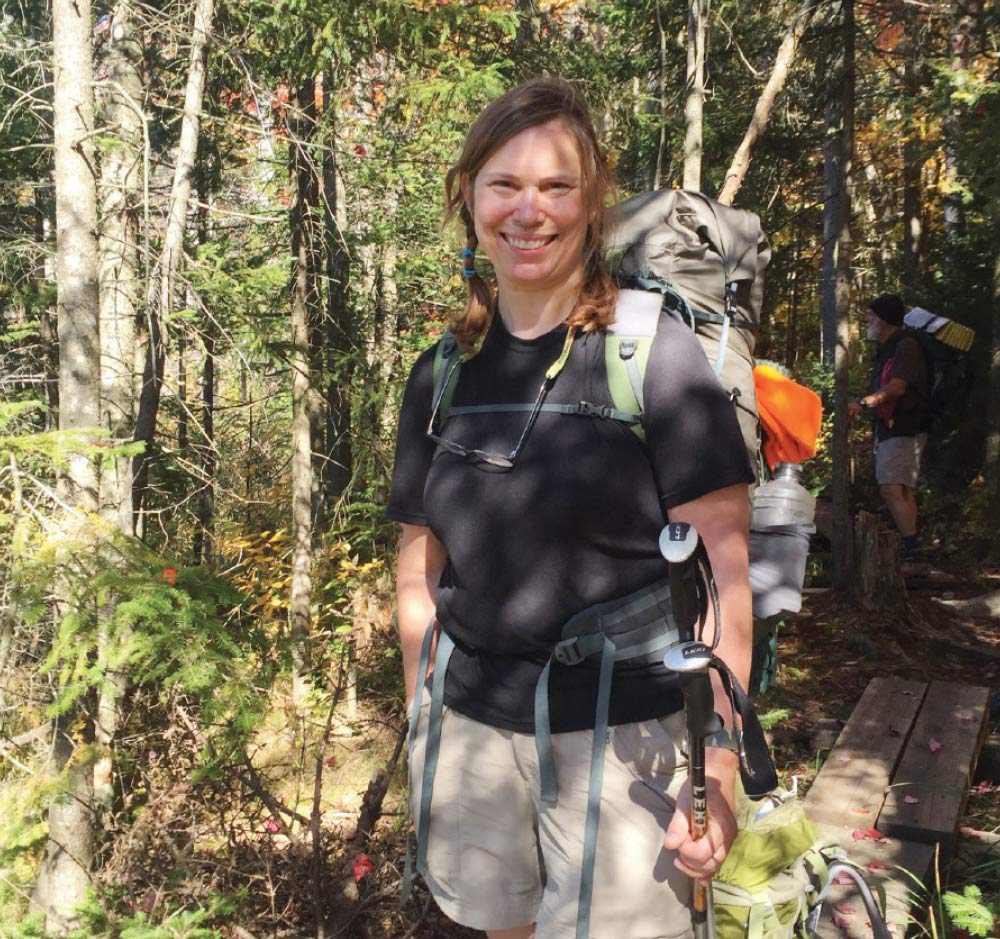
After the ATC’s longtime employee, the legendary and beloved Jean Cashin — known to legions of hikers as “Trail mom” — retired in 1996, I was hired as information services manager. It was a joy and privilege to have the responsibility of seeing that those who walked through the doors of the ATC’s Harpers Ferry Visitor Center were made to feel welcome and to provide information about the A.T. Every day I met inspiring people for whom visiting the ATC was a pilgrimage of sorts, whether they drove or walked a thousand miles.
There is a certain thrilling look of hope and anticipation in the eyes of those with an A.T. dream, whether it’s to see their first white blaze or walk the entire Trail. Greeting and assisting them felt like a sacred honor.
This June, I retired to spend more time with my husband, a former ATC colleague. Now I have more time to devote to our A.T. volunteer work that began in 1995 when we adopted a 1.2-mile Trail section on the Virginia/West Virginia border. Later, the scope of our volunteer responsibilities grew when we adopted several miles of the A.T. corridor boundary to monitor.
I left the ATC with one goal unmet: finishing an entire hike of the A.T. while an ATC employee. On my vacations, I was able to hike more than 2,100 miles in the span of 33 years. Each hike renewed my love for life, the A.T., and the ATC. I have just 56 exciting miles left to complete the A.T. a second time. The next chapter of my life is unwritten, but the A.T. will be woven into its pages.